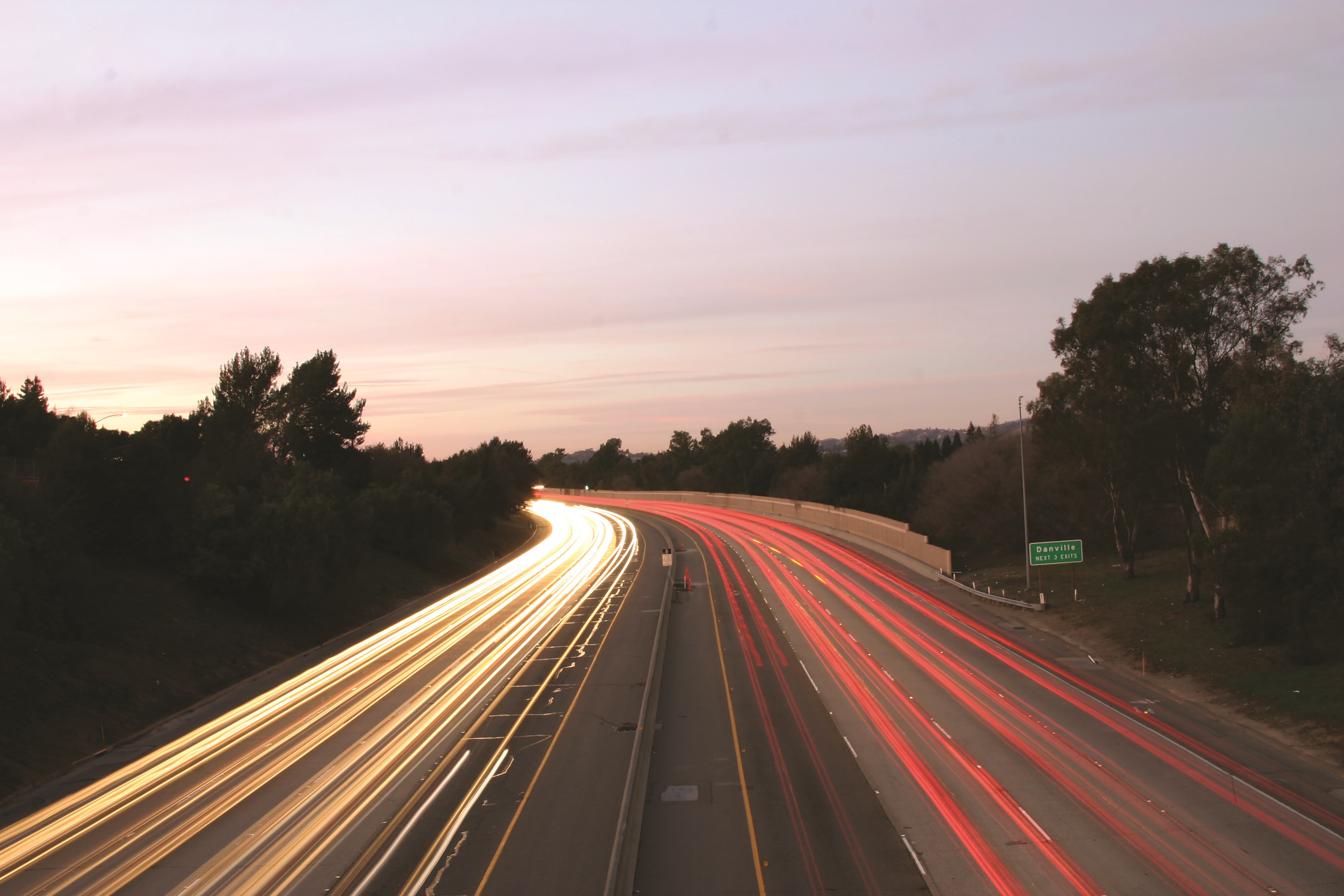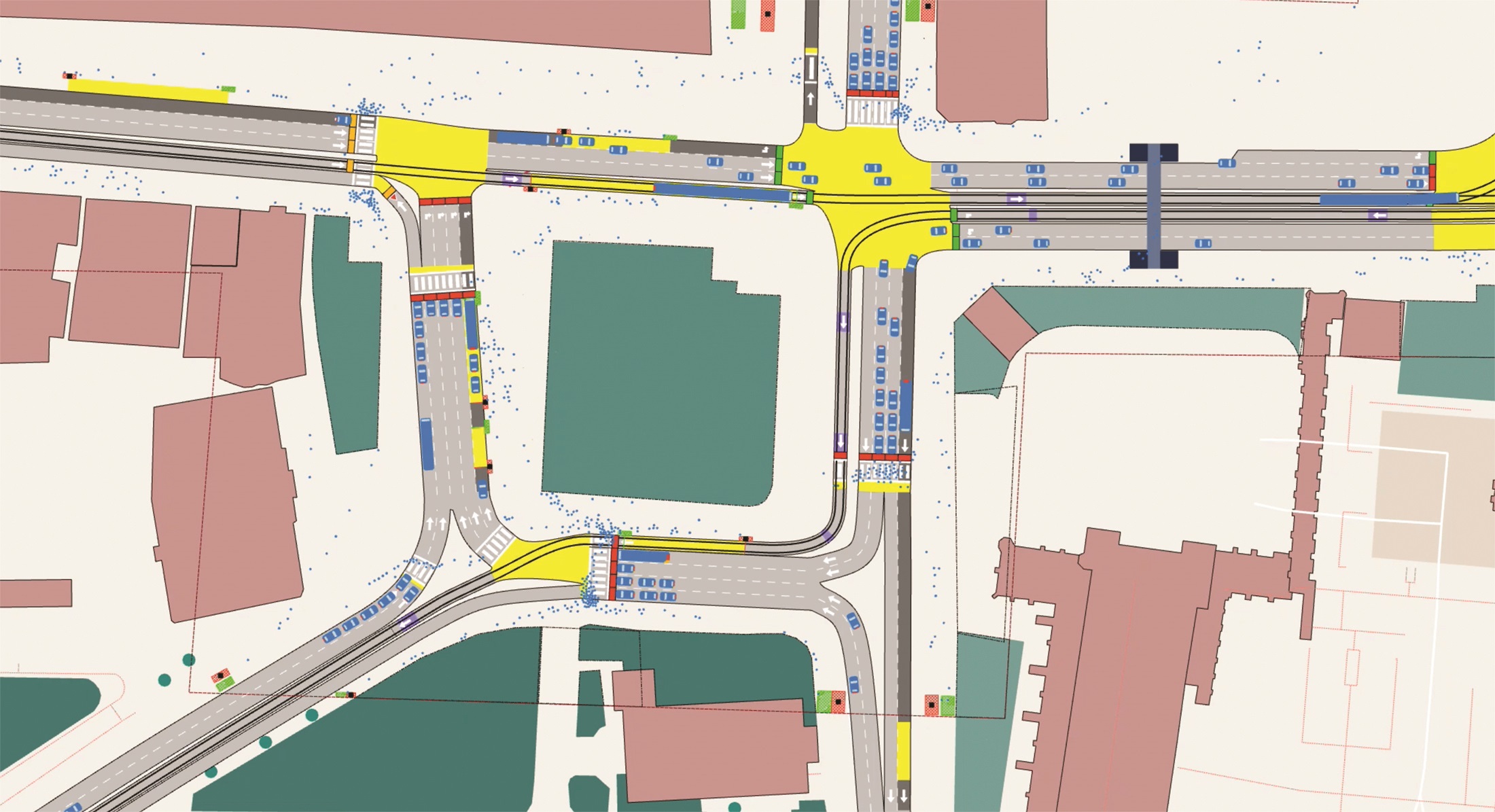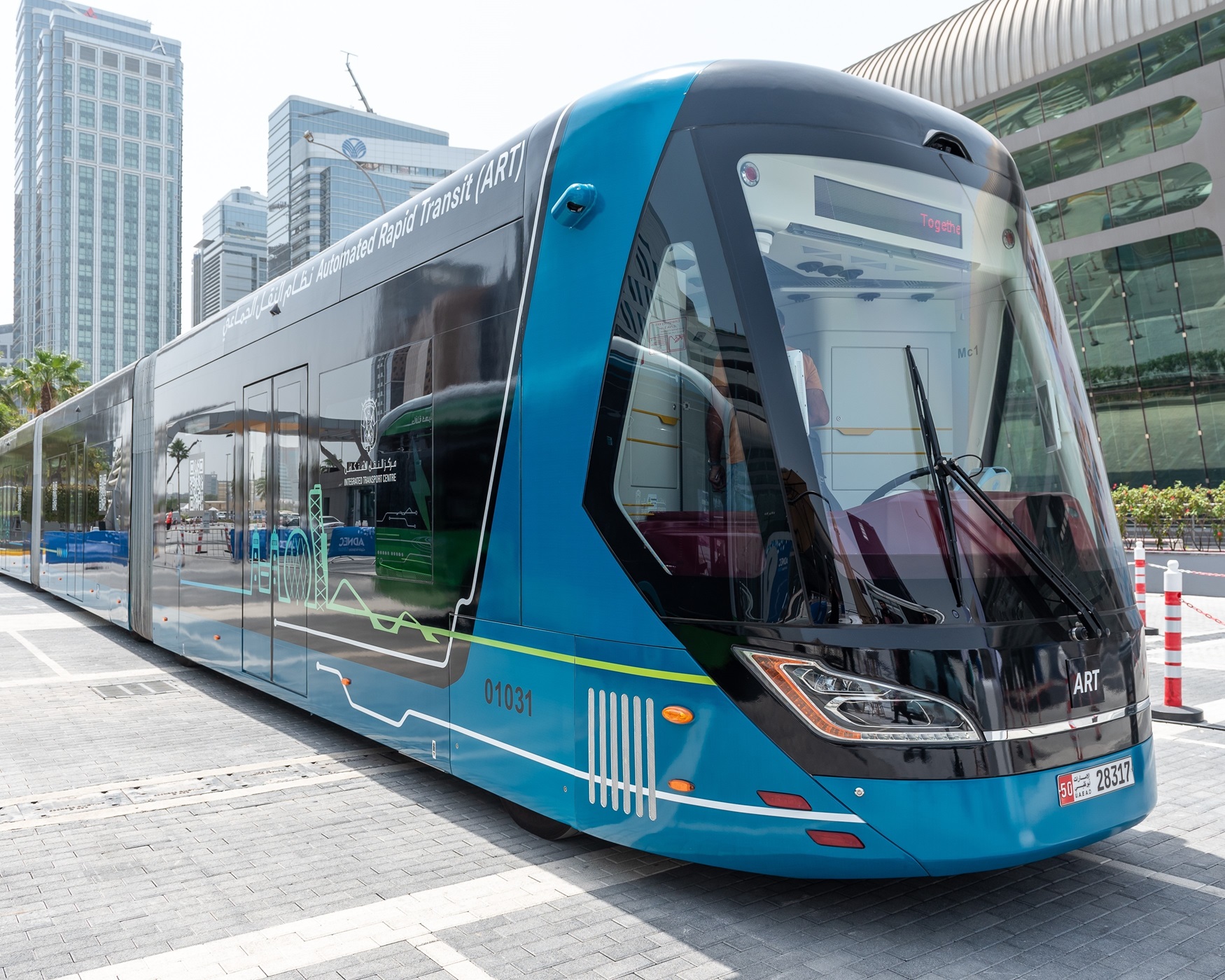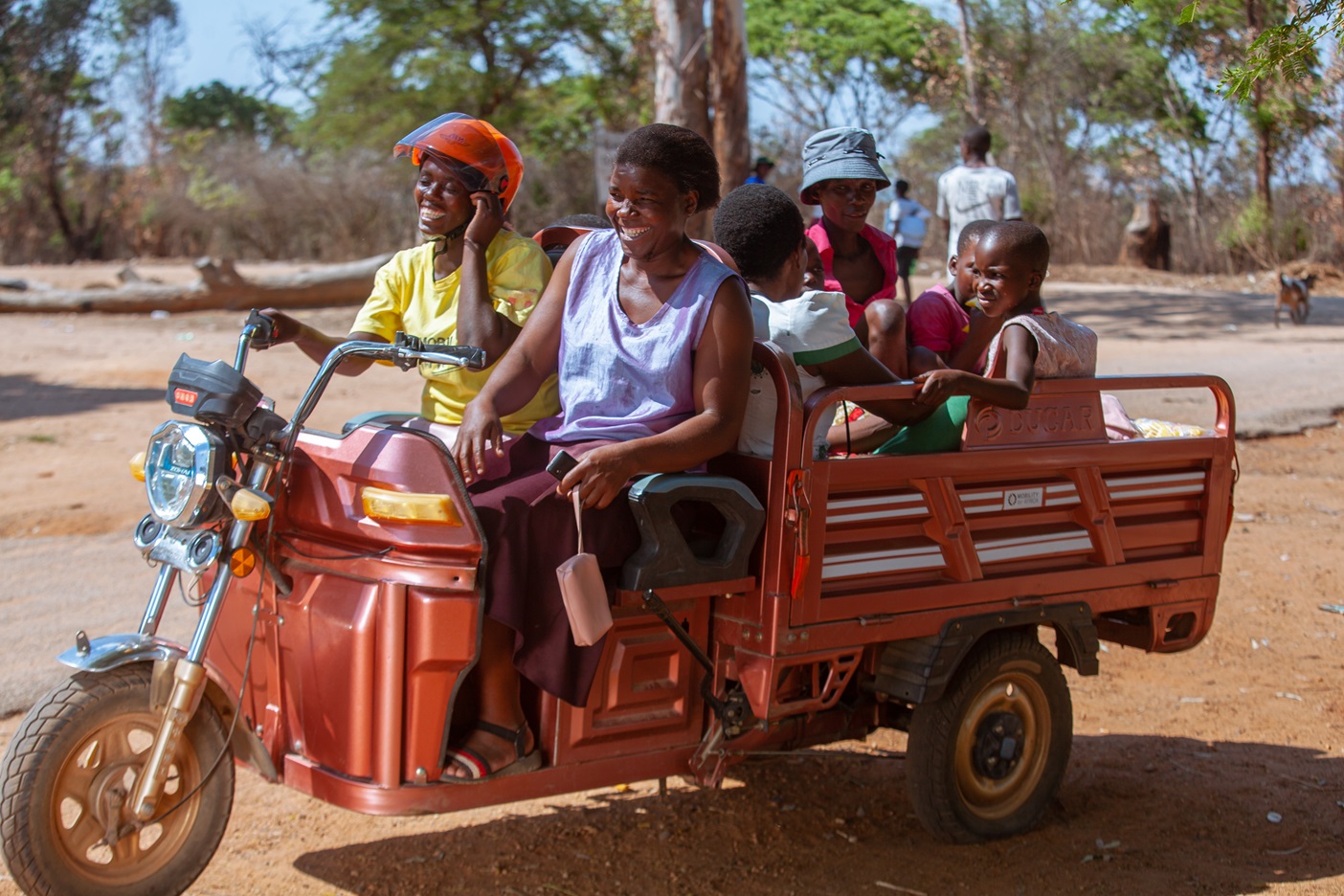
Net Zero demands that countries in the Global South will short-circuit the internal combustion engine and grow their economies on sunshine (and other renewables). This is the decarbonisation dream - but what does that actually look like?
The winner of this year's Movmi Empower Women in Shared Mobility (EmpowerWISM) Award - Mobility for Africa - is a visionary organisation which provides a pattern for green growth and community resilience that should inspire hope. Based in Zimbabwe, in the south of the continent, it is built around selling low-cost, robust, electric, three-wheeled vehicles, called the Hamba. And in much the same way as Tesla when it first launched, it has built an ecosystem that will enable them to charge and the enterprise to scale up.
The potential is huge as the Hamba is designed for rural environments where there are transport deficits. Crops go to waste if they cannot get to market and people spend upwards of 30% of their income on transport. This is no peripheral matter: 70% of Zimbabwe's population lives and works in rural agricultural economies, mainly in small-scale farms. Mobility for Africa is reaching the people who feed and nourish the nation – and firing up the rural economy.
However, like the canals and the railways which charged the industrial revolution in Europe, the Hamba and its ecosystem is a means to get goods to market, galvanize local economies, free up women’s time and bring in income to the families that need it most.
Design for the rural context can best be described as ‘challenging’. Shantha Bloemen, who launched Mobility for Africa in 2018, sets out the issues: “You have to consider that the grid is not there and the roads are poor quality, unpaved beyond the main road and people – mainly women - are travelling for hours every day by foot.”
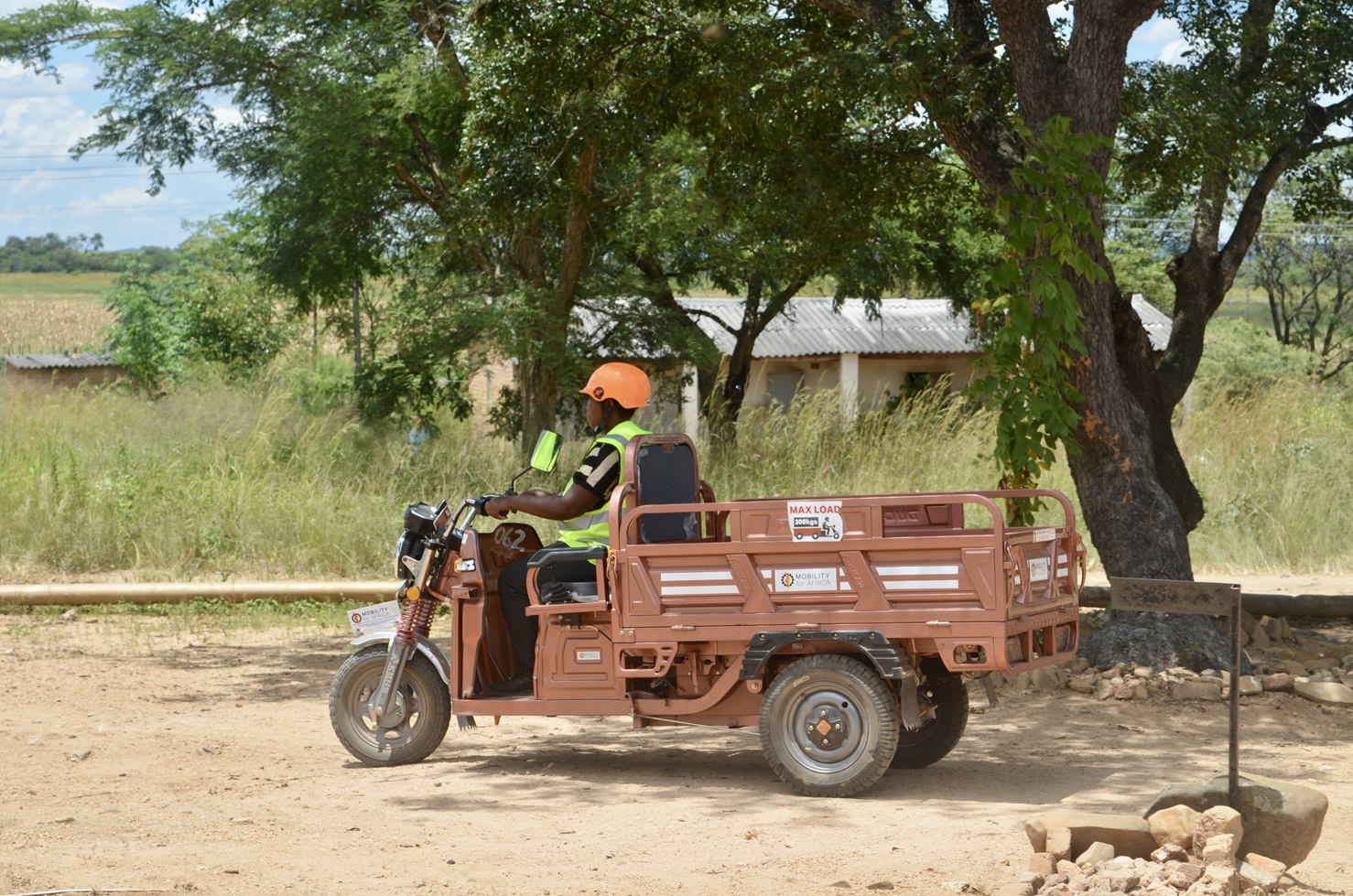
Pilot sites
Mobility for Africa has based its designs on research and pilot projects to adapt to this environment. It started in 2018 with focus groups with women in rural areas in Zimbabwe. In a result that should surprise absolutely no one (but appears to be very overlooked) it turns out that carrying water, seeds, fertiliser and produce on your back for several hours a day is exhausting, painful and takes huge amounts of time that could be more productively spent.
The initial pilot projects were set up in rural and peri-urban (that is, with sparse development) areas, in different types of economies and with different typical distances travelled and on different roads.
The Hambas were piloted with groups of women farming and growing in a defined area. The group would share the cost of a vehicle and use it to transport produce to market. They worked on a cooperative model, paying for the vehicle rental out of their combined sales and splitting the profits. At other sites, Mobility for Africa trialled a profit-share with drivers which proved harder to administer. They hit on their driver recruitment model in the third pilot.

“We really need creative and practical thinking and we’re still a long way from solutions if we’re not willing to experiment” Shantha Bloemen, Mobility for Africa
One thing all the pilot sites had in common was a more diffuse population. Homes and crops are necessarily spread out across farming lands. The routes driven varied from more level to more hilly terrain, and across various grades of rougher and smoother off-road tracks. Generally people travelled around 3-4km between their fields and homes and often further – 10-15km - to sell their crops. In more peri-urban areas the distances to market are shorter (but still 3-4 km carrying weight is challenging on foot) and the types of activities more skewed towards trading, poultry farming and carrying materials.
These initial pilots enabled Mobility for Africa to develop its technology and the roll-out model for each site.
About the Hamba
Mobility for Africa is built around the Hamba, a robust low-speed electric trike with a 400kg payload – able to carry multiple people or goods. It has a range of just under 100km per charge. After its trial deployments in different types of area it was reinforced with stronger tyres, bigger mudflaps and increased engine size (along with stronger braking) to provide the rugged, all-road surface vehicle that is needed in rural areas. Rather than lead-acid batteries, which require eight hours of charge and degrade every two years, the Hamba has an LFP battery developed to be safe and long-lasting – with 8-10,000 cycles of life expectancy (typically 13 years of use) that charges in five hours. It’s suitable for using as a storage battery to power homes as well (particularly useful during the latter part of its life).
“One of the things I noticed is that rural use is hard on vehicles,” explains Bloemen. "Motorbikes with petrol engines seem to have a two- to three-year lifespan. We’re really pleased to say that our original trikes from the pilot projects in 2019 are all still operational in 2024.”
Pilots also enabled Mobility for Africa to develop the charging structure for the vehicles, condensing its technology into an integrated unit, combining a solar array, inverter and charger. It can also combine grid charging with its generation when power is available – making it more versatile and adaptable. It’s particularly key because grid power is not consistent and many homes are not connected.
“Investors want to see tech solutions with the potential for instant massive scale when in Africa we don’t have the basic power or mobile communications grid to support them"
Technical skills to repair and service EVs are still developing worldwide – however in Zimbabwe, Mobility for Africa has already developed a curriculum and manuals for institutions to be able to deliver the technical knowledge to manage charging stations and service electric motors.
Each deployment covers a 30-40km2 area, with a main charging hub at its centre, and additional battery collection points for outlying areas. This supports a fleet of 40-50 Hambas with a solar-powered charging station (which can also connect to the grid). Sites employ two to three people who cover practical management – charging the batteries, servicing the Hambas and managing spare parts - as well as communication and recruitment of new drivers.
Recruitment is aimed at women drivers, who are invited to apply to drive. They sign up to a ‘lease to own’ model which buys the vehicle over the course of a year. They are trained on the Hambas and also agree to rent four batteries a week – equivalent to 400km driving.
There’s a typical Hamba driver that sees the opportunity and likes to hustle. They are creative with a business eye. They will typically charge a minimum fee for school transport mornings and afternoons, while driving harvests or fertiliser between fields and homes during the day or taking people to clinics. And they are keen on the Hamba.
Driver Irene Maodza (24) says: "I’m a mother of one and a farmer as well as into buying and selling. I use my monthly savings to buy farming inputs and other household expenses. The weekly income from sales is $70. I am looking forward to starting other projects that will help me increase my income.”
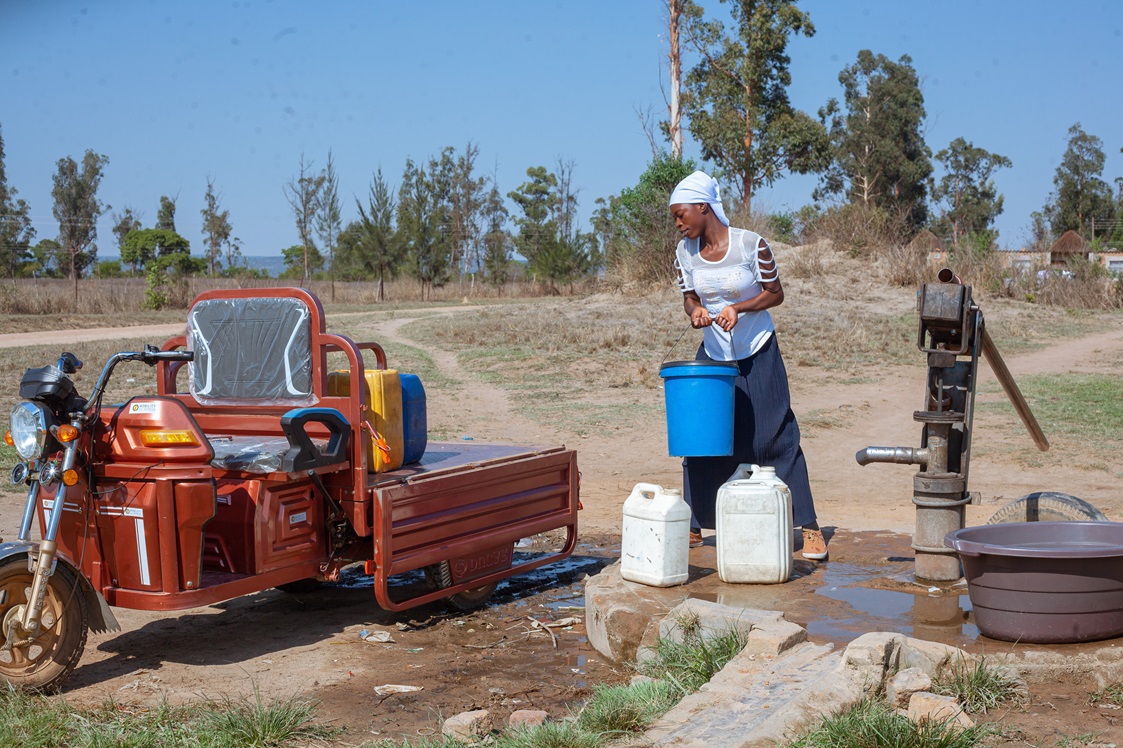
Room for investment
So why isn’t Mobility for Africa everywhere already? “I didn’t think it would take this long," Bloemen confessed to ITS International. Having highlighted the massive potential – 2.4 million people in Zimbabwe alone (and more broadly the 60% of all Africans living more than 2km from an all-seasons paved road) - and developed both the solutions and business models that work in this context, it’s still an uphill task to convince investors.
“Investors want to see tech solutions with the potential for instant massive scale when in Africa we don’t have the basic power or mobile communications grid to support them,” she adds.
Instead, the Hamba and its ecosystem (not unlike canals and railways) are capex-heavy and focused on robust engineering. Rather than waiting for OEMs to trickle down technology from dense, rich, urban areas to the diffuse, less well-off rural hinterlands, Mobility for Africa has a system that can work in - and is replicable across - rural, traditionally difficult, use cases.
“We need practical solutions for the challenge of climate change and the creation of the green economy," Bloemen says. "We really need creative and practical thinking and we’re still a long way from solutions if we’re not willing to experiment."
However, she and her team have demonstrated creativity and practicality in spades. Their EmpowerWISM Award win indicates that they’re on the right track. Investment for Mobility for Africa to reach its potential should surely follow.



![We’ll always have Paris: TomTom Orbis Maps combine open map data and the company’s proprietary data (©TomTom) Paris TomTom Orbis Maps open map data proprietary data [©TomTom]](/sites/its/files/2024-06/Paris_TomTom%20-%20Orbis_Overlays%20-%20WEB.jpg)


